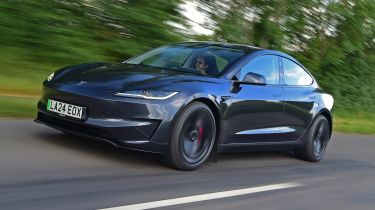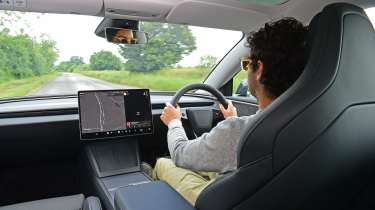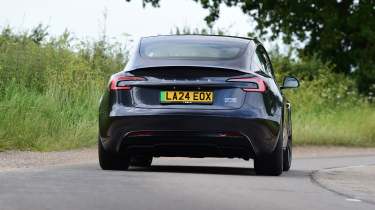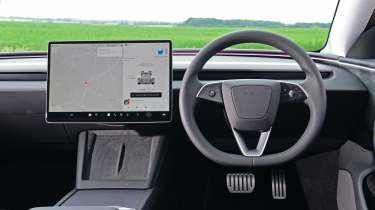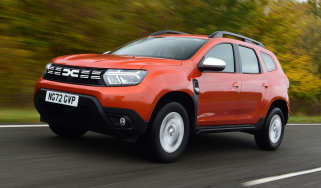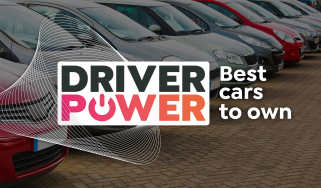New Tesla Model 3 Performance 2024 review: a capable EV that’s ferociously fast
Tesla’s upgrades have transformed the Model 3 Performance into a more dynamic offering than its predecessor

Verdict
The Tesla Model 3 has always been quick, but this new Performance model ushers in the chassis tech to make it fun as well as fast. With its numerous improvements, it’s also now developed something of a dynamic fingerprint. It’s still not quite the ‘BMW M3 killer’, but it is still an astonishingly capable performance car at an astounding price.
The original Tesla Model 3 Performance was dubbed a ‘BMW M3 killer’ when it was first announced back in 2017. The ultra-high performance EV had an astounding pace, sure, but its driving experience was dominated by some pretty severe dynamic inadequacies – ones only compounded when mentioned in the same breath as an M car.
So, here we are in 2024 with the significantly updated car. But once again that same M3-killer rhetoric seems present. Question is, could it be valid this time around?
On first impressions, things are off to a good start. While the updated Model 3’s restrained aesthetic remains, there are lots of new details that give the whole car a much more serious stance. The front bumper is completely different to the standard Model 3’s, for example, with a big splitter and large upright air intakes that help the car look lower and wider. The body sits lower to the ground, too, and on a serious set of forged 20-inch wheels wrapped in high-spec Michelin rubber.
More reviews
Car group tests
- Polestar 2 vs Tesla Model 3 twin test review: EV titans go head-to-head
- BMW i4 vs Polestar 2 vs Tesla Model 3: 2022 group test review
- Ford Mustang Mach-E vs Tesla Model 3
- Tesla Model 3 vs BMW 3 Series: electric vs diesel showdown
In-depth reviews
Road tests
- Tesla Model 3 2023 facelift review: so much more than just a new face
- New Tesla Model 3 Standard Range Plus 2020 review
Used car tests
The same can be said about the design at the rear as, naff badge aside, the big carbon fibre rear lip spoiler and new lower bumper clip once again reiterate the underlying message. This time, Tesla has put serious effort into creating a high-performance super saloon.
Under the skin, the powertrain has been updated, but remains curiously vague when it comes to many of the specific facts and figures us Europeans are usually privy to. Tesla is quoting peak power of 453bhp from its two electric motors, which is slightly down on the US model’s 510bhp. But the performance times are on par, and our Chinese-built car gets an extra 25-or-so miles on its projected range (328 miles) compared to the US-spec model built in Freemont, California.
There’s no torque figure to speak of, but the headline acceleration figure has now dropped under the three-second threshold to 2.9 seconds. It’s worth noting that’s zero to 60mph (rather than 62mph), and with a roll-out subtracted – so let’s call it low-3s to 62mph in normal testing conditions.
Most Tesla users that charge away from home will use the wonderful Supercharger network, where the Performance will be able to top up at speeds up to 250kW. Again, Tesla doesn’t quote 10-80 per cent charge times like most manufacturers somehow manage.
But there wasn’t really much wrong with the Performance’s, erm, performance, last time around. And that’s why Tesla’s making a much bigger deal about the suspension and chassis. The former is now completely unique to the Performance, and features adaptive dampers for the first time. These are utilised in a relatively sophisticated layout – double wishbones up front and a multi-link rear – with stiffer springs, thicker anti-roll bars and unique bushings across the board.
The brakes are also bigger than before, and thanks to a 1,851kg weight figure, you could even call the Model 3 lithe in this age of 2,100kg Mercedes-AMG models.
Yet the proof is in the driving, and the new Performance instantly gets a lot of things right. The new high-performance sports seats are excellent, and in any other car would warrant a mention. But compared to the pews usually found in Teslas, these are a revelation. Your initial impression is to think the driving position a little high, but this has more to do with the McLaren-like low scuttle than the seats being perched substantially above the roll-centre.
On take off, the Model 3’s clarity and response from the electric motors is very impressive. There’s an intuition about how the car builds and drops speed that feels practically hard-wired to your brain, and when there’s this much performance, gives you a (false) impression that you’re almost in a vacuum – as opposed to those around you driving in treacle.
But the new Performance finally does something useful with all its power thanks, in part, to its new ‘Track mode’. Through this new system, the driver is able to finely adjust lots of the powertrain’s individual parameters that dramatically change the way it puts its performance to the ground. This includes being able to dictate how rear-biased you want the power split to be between the front and rear axles or pick between three levels of stability control. You can even control the level of regenerative braking – a first for any Tesla.
In reality, these only make subtle differences on the road, but add precious interaction and engagement to a method of providing astounding performance that typically hasn’t been great in that department previously.
Yet the big win for the new Performance is the suspension, which is the best we’ve felt in any Model 3, or indeed any Tesla yet. It’s not soft, but it is controlled and resolved, helping the car plough through bumps in the road that would have had any other Model 3 crashing shuddering.
There is a good amount of movement to that suspension. It doesn’t take long down a challenging bit of road to find its limits in terms of travel, but a quick flick into Sports mode adds a considerable amount of extra support to overcome that problem. The Performance is more than happy to lean into its body movement, hold the weight there through the corner, and progress out the other side.
It helps make the car’s phenomenal straight-line speed feel even more exploitable, as if the power is there to do more than fire it down the straights and then tip-toe around bends. Ironically, the notion of American muscle cars that didn’t know how to corner is not one that disappeared with the introduction of the electric car.
But in the quest of toppling the mighty M3, we’re still not quite convinced. There are two main issues that do persist and it concerns the steering and the brakes. The steering is definitely better than a standard Model 3 – it’s heavier, yes, but also more consistent and has much less kickback and shuddering through the rack when you hit rough road sections.
What it doesn’t do, though, is offer any meaningful confidence. Plus that weighting is a little clumsy, and offers little distinction between ground speed, load and the amount of lock applied – limiting what you can use to judge how much grip the front tyres are able to offer. An M3 isn’t typically dripping with feel in the traditional sense, of course, but there’s an accuracy and an alacrity that still give you a confidence that is still missing here in the Tesla.
The second, and bigger issue remains the brakes, which don’t feel powerful or resilient enough to lean on in fast road driving, let alone any sessions on track. They do offer a nice firm pedal, and the overall stopping power is fine, but they’re nearly impossible to modulate. Every press of the pedal feels like an exploratory exercise in finding out when and how the two braking systems (friction and regenerative) pass the baton between one another. This is by no means an issue specific to Tesla, but it’s something that some EV manufacturers seem to have found a measure on. Can’t win ‘em all, we suppose.
The fact that we’re talking about the merits of direct competition between BMW and Tesla shouldn’t be dismissed, however. And in an age of silly performance numbers being spouted across the board – from compact Volvo SUVs and MG hatchbacks, to Porsches or AMG Mercs – the time is now for Tesla to develop a slightly more nuanced approach to its high performance models. One it appears to have found in the brilliant new Model 3 Performance.
| Model: | Tesla Model 3 Performance |
| Base price: | £59,990 |
| Powertrain: | 78kWh battery, 2x e-motors |
| Transmission: | Single-speed automatic, four-wheel drive |
| Power: | 453bhp |
| 0-60mph: | 2.9 seconds (with rollout) |
| Top speed: | 163mph |
| Range/charging: | 328 miles/250kW |
| Length/width/height: | 4,720/1,849/1,431 |
| On sale: | Now |

